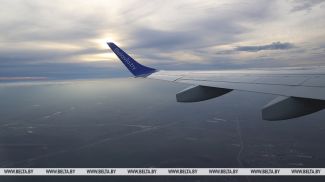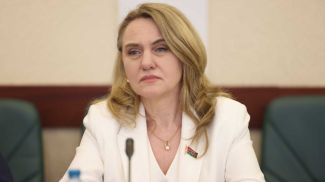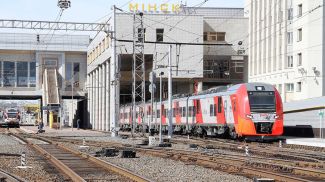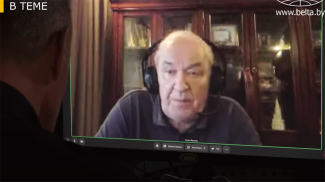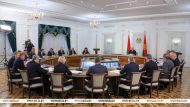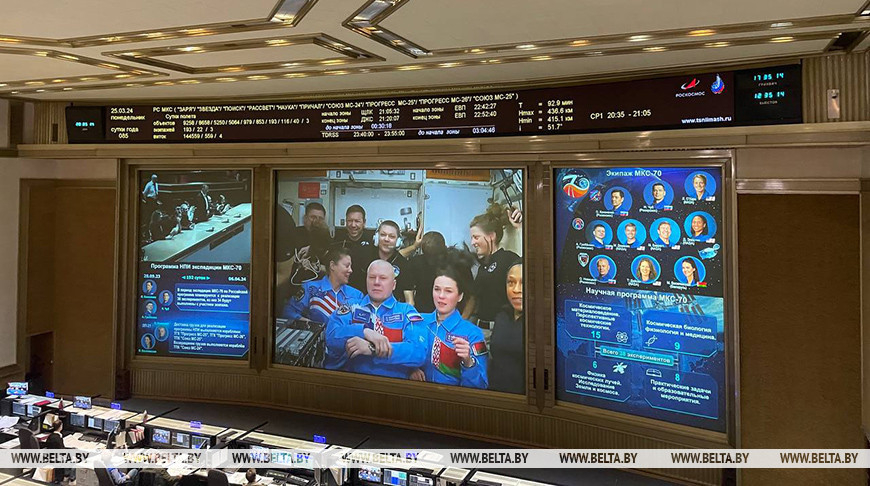
MINSK, 6 April (BelTA) – The flight of Belarus’ representative to orbit is an important event in the manned cosmonautics of the Union State of Belarus and Russia, BelTA learned from a comment by Ambassador Extraordinary and Plenipotentiary of Russia to Belarus Boris Gryzlov.
Boris Gryzlov said: “Russia and Belarus have accomplished a lot in the joint development and exploitation of spacecraft. Our cooperation in space exploration is advancing to new heights now. The flight of Belarus’ representative to orbit is an important event in the manned cosmonautics of the Union State of Belarus and Russia. From the bottom of my heart I congratulate Marina Vasilevskaya on the first space mission and the successful completion of the entire research program.”
BelTA reported earlier that the Russian crew transfer vehicle Soyuz MS-24 undocked from the International Space Station at 6:54 Minsk time. The reentry vehicle safely landed about 150km to the southeast of the city of Zhezkazgan, Kazakhstan at 10:17 Minsk time. In addition to Belarus’ Marina Vasilevskaya the Roscosmos cosmonaut Oleg Novitsky and the NASA astronaut Loral O'Hara came back to Earth.
Boris Gryzlov said: “All this time and for the first time ever a crew from the Union State worked alongside colleagues from NASA aboard the International Space Station. Certainly, this fact is of great symbolical importance in the current situation. But Marina Vasilevskaya’s flight has nothing to do with space tourism. While at the ISS she carried out a number of research projects in various fields ranging from spectral photography to biomedicine. The scientific program was developed over the course of several months and every hour in orbit was used to the best advantage.”
He pointed out the speed with which Russia and Belarus had moved from discussing the possibility of such a flight to the practical realization. After visiting the Vostochny Cosmodrome together with Belarus President Aleksandr Lukashenko in April 2022 President of Russia Vladimir Putin instructed Roscosmos to organize the flight. The Roscosmos head Yury Borisov visited Minsk in March 2023. In conversations with Belarusian colleagues he discussed all the parameters of the expedition. As a result, the time between the idea and the rocket’s launch was less than two years, including the time needed to select candidates and train the main crew and the backup crew. “It is a record short time in terms of space exploration. But it is at this pace that Russian-Belarusian Union State projects are getting implemented today,” the diplomat stressed.
Boris Gryzlov noted that Belarus and Russia had accumulated a lot of experience in this field. The Byelorussian Soviet Socialist Republic was always a leader in the development of space technologies. Belarusian engineers created optical devices, rocket launch control systems, image processing software, remote Earth sensing systems for the Soviet space program. Suffice it to say that the engine of the third stage of the Vostok rocket, which put Yuri Gagarin’s spacecraft into orbit, was designed by Semyon Kosberg from the Belarusian city of Slutsk.
Joint work to explore the outer space continued within the framework of the Union State of Belarus and Russia. A joint ground-based system for controlling spacecraft was created as well as the infrastructure for data receiving and processing. The existing satellite constellation of the Union State of Belarus and Russia includes six satellites: the Belarusian BKA satellite for the remote sensing of Earth and five Russian satellites of the Canopus series with the same functionality.
“Their usage produces direct and economically tangible results for us, in particular, in agriculture. Preparations are in progress to launch a new Belarusian-Russian satellite for the remote sensing of Earth with the resolution of 0.35 meters. Essentially it will be able to see a piece of A4 paper from outer space. This satellite is supposed to be put into orbit in 2029. Then we will proceed to creating an entire group of satellites on the same technological platform. We have all the scientific and manufacturing base that we need for it,” Boris Gryzlov stated.
In his words, the Belarusian enterprise Peleng, which specializes in making optic and electronic equipment, has achieved a lot in the last few years. But it is just one example. The ongoing Union State programs on developing the production of semiconductors, processors, and other microelectronic components on par with modern manufacturing processes are as important. “We have funding, resources, and specialists. New Union State technologies will also be used to create a Russian orbital station. It will be the successor of our segment of the International Space Station, which term of service is nearing an end. This strategy will allow us to focus on reaching concrete goals, which are important specifically for Russia and Belarus,” the ambassador stated.
As an example he mentioned that the International Space Station’s inclination angle allows cosmonauts to see roughly 15-20% of Russia’s territory due to peculiarities of the orbit. The new Russian orbital station will follow a fundamentally different trajectory, which will ensure full coverage of Earth’s surface, including the arctic zone, which is extremely important in many aspects.




